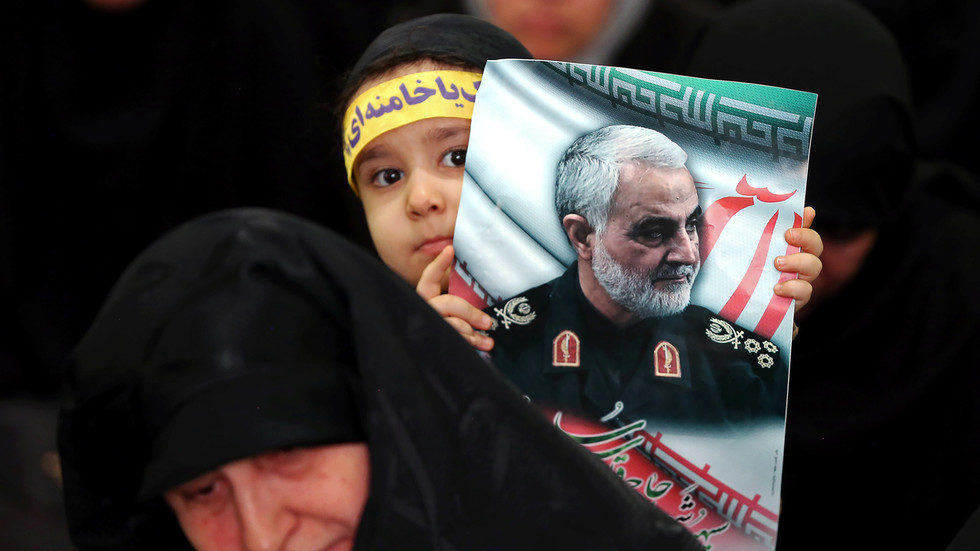
Comment: You mean, they ... lied? Imagine our total lack of shock.
Now over a month removed from the targeted killing of Iranian Quds Force commander Qassem Soleimani, the White House on Friday has offered yet another rationale for the operation, the latest in a series of alternating arguments offered by the president and Pentagon officials.
"The president directed this action in response to an escalating series of attacks in preceding months by Iran and Iran-backed militias on United States forces and interests in the Middle East," the memo said.
While the document notes that the assassination was meant to "protect" American troops and "deter Iran" from future attacks, US President Donald Trump previously maintained Soleimani was killed specifically "because they were looking to blow up our embassy" - later expanding the alleged Iranian plot to four American embassies.
Defense Secretary Mark Esper initially questioned that assertion, telling CBS "I didn't see [a threat] to four embassies," but eventually came around to "the president's view," all the while providing no evidence for any of the conflicting accounts.
After a Senate briefing on the drone strike in January - where officials from the State Department, the CIA and the Pentagon made a case for the operation - Republican Senator Mike Lee of Utah said it was the "worst" military briefing he had ever witnessed, arguing lawmakers were left "under-informed as to the legal and factual basis for the attack on Soleimani."
Extremely popular among Iranians due to his role in beating back Islamic State (IS, formerly ISIS) in both Iraq and Syria while leading the Quds Force, Soleimani's death was publicly mourned by thousands across the country. The US strike also sent tensions soaring between Washington and Tehran - culminating in an Iranian missile strike on two American bases in Iraq - and drove a wedge between the US and the Baghdad government.
Killed while visiting Iraq for a meeting with then-Prime Minister Adil Abdul-Mahdi, Soleimani's execution was not cleared with Iraqi officials, prompting a parliament vote to expel US forces from the country, though Baghdad has yet to follow through on the move.
With the narrative around the killing continuing to shift and evolve, it remains unclear which version of events the White House will ultimately land on, or whether lawmakers or citizens alike will ever get a straight explanation for why the operation was necessary.



Americans are completely insane when it comes to Iran b/c of the Zionist brainwashing and constant propaganda..
Here's some new information about Iran that I recently stumbled upon:
America’s Misunderstanding of the 1979-81 Hostage Crisis Still Poisons US-Iran Relations The Iranians were terrified the US, which had accepted the shah, was going to reimpose him as it had in 1953 By Stephen Kinzer [Link]
(So, apparently, the whole reason the Iranian stormed the embassy is because they feared another coup was imminent and that the US was going to reinstall the Shah)
And this article from Larry C Johnson calls BS on all the talk about Iran being the leading sponsor of terror:
The Facts About Iran and Terrorism by Larry C Johnson
[Link]